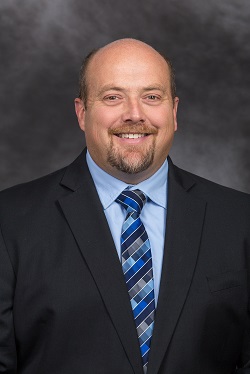Massachusetts-based Physical Sciences Inc. partners with UND to test weather-measuring UAS payload
UND recently provided Massachusetts-based Physical Sciences Inc. (PSI) the advanced platform, authorization and flight excellence to test its compact laser hygrometer, developed for the U.S. Department of Energy’s Office of Science.
The hygrometer, built to measure ambient water vapor density, air pressure and temperature from an unmanned aircraft system (UAS), was successfully tested during a sustained six-hour flight south of Mayville, N.D.
Developed by PSI and its project team members, the instrument is designed for research at the Atmospheric Radiation Measurement Climate Research Facility in northern Alaska, to better understand cloud microphysics.
In order to prove the viability of the instrumental payload, PSI approached UND, one of the only universities nationwide operating a Boeing Insitu ScanEagle. Though the hygrometer is designed for a variation of Navmar Applied Sciences Corporation’s TigerShark UAS, the ScanEagle’s modular design allows for relatively easy payload integration for testing in a safe, low-risk environment.

Paul Snyder, director of UND’s UAS program in the John D. Odegard School of Aerospace Sciences, was proud of the University’s ability to contribute.
“Academia and industry coming together to solve problems is one of the great things about this,” Snyder said. “They recognized our capabilities and we made the connection to help achieve their development goal.”
Great relationship
UND handled the flight operations for the test, including the acquisition of a Certificate of Authorization from the Federal Aviation Administration (FAA) to operate in 49 square kilometers extending south of the Mayville Municipal Airport. The area was determined based on its ability to accommodate the various maneuvers flown by the ScanEagle, allowing thorough testing of the hygrometer’s readouts. For safety, UND also provided a manned chase plane to fly with the UAS.
“We had a great interaction with the UAS group at UND – Paul Snyder and the pilots, as well as flight line staff and ground support,” said David Sonnenfroh, principal research scientist and atmospheric sciences manager at PSI. Sonnenfroh came to North Dakota to oversee the payload testing and toured UND’s facilities. “It was a great effort by everybody. We team up with universities with unique facilities, and UND fit that bill with its drones.”
Insitu, which first recommended UND’s flight operations to PSI, provided payload engineers and sent one of their chief ScanEagle pilots to North Dakota to oversee integration and testing, as well.
“Because of our great relationship with Insitu, we were able to connect them with PSI on the engineering side of the operation,” Snyder said, adding that Insitu contributed expertise on their own accord. “Insitu came here because they wanted us to be successful, saying that our success is their success. I think that says a lot about the UAS industry. We’re all trying to help advance UAS safely within the National Airspace System.”
Future collaborations
The implications of testing scientific UAS applications, Sonnenfroh says, will be clearer as UAS becomes more integrated in the national airspace. The versatility and accuracy of unmanned systems, and payloads like PSI’s compact laser hygrometer, will provide more consistent and reliable data to atmospheric researchers and forecasters – adding to the stream of information already coming from satellites, ground stations and weather balloons.
“The great hope is to see networks of drones flying different patterns, bringing data into the algorithms predicting weather,” Sonnenfroh said. “With increased data, people have shown that near-term accuracy will markedly improve.”
Sonnenfroh stated that PSI will explore future collaborations with UND. Snyder recognized the potential, as well.
“It was great to hear that they’re hoping for another opportunity, or a way to follow up this work,” Snyder said. “In addition to helping solve real problems, a good research project is one that benefits our students by increasing the experience of the faculty, providing resources for the students and creating opportunities for our students to be involved. This one fit those categories and expanded our knowledge base so we can do more.”
